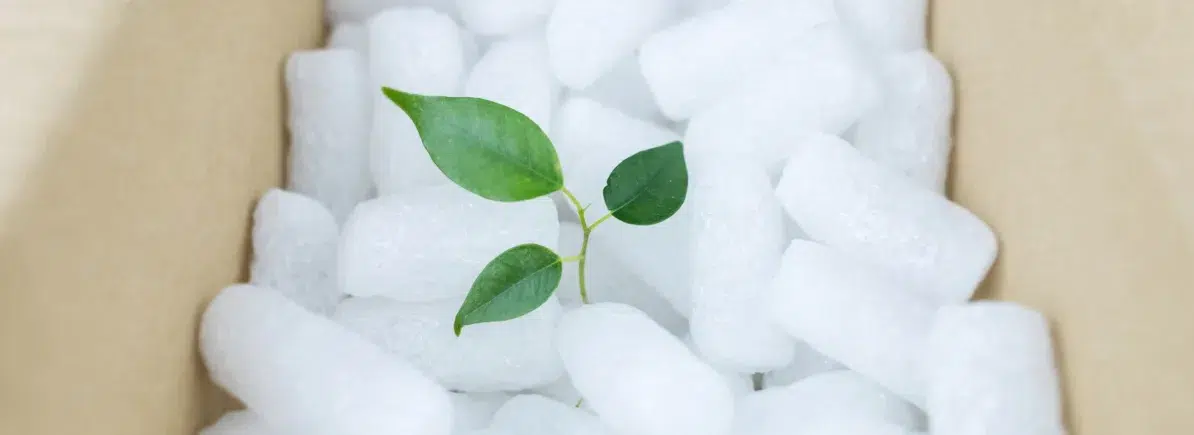What is Sustainable Packaging?: A Quick Guide

“Sustainable packaging” – it’s a term you’ll be hearing more often these days. With the growing concern for our environment, sustainable packaging is more important than ever. So, what is sustainable packaging?
In this article, we’ll explore what sustainable packaging is, why it’s important and debunk common myths about it. We’ll also consider why sustainable packaging can have benefits for businesses too!
By choosing sustainable packaging, businesses can show their dedication to environmental stewardship.
- 1.
- 2.
- 3.
- 4.
- 5.
- 6.

Unravelling the Concept of Sustainable Packaging
Defining Sustainable Packaging
What does sustainable packaging mean? In essence, it is packaging that considers sustainability and minimises environmental impact throughout its lifecycle.
For packaging to be considered sustainable, the design, manufacturing, use and disposal or repurposing of the packaging must consider everything from the raw materials it’s made from through to the carbon emissions associated with the packaging and even how it’s handled.
Often, sustainable packaging may be referred to as eco-friendly packaging or environmentally-friendly packaging too.
Key Elements of Sustainable Packaging
If you’re wondering if the packaging you’re considering is environmentally friendly, it’s worth noting these characteristics:
- Material used: packaging that’s sustainable often centres around renewable and recyclable materials like paper, cardboard, and bioplastics. Eco-friendly materials are characterised by being responsibly sourced and having a lower carbon footprint.
- Waste reduction: packaging that can be easily recycled or composted and optimising packaging design to reduce excess material usage will make it even more sustainable.
- Energy and fuel efficiency: packaging that is manufactured using energy-efficient processes and technologies to minimise greenhouse gas emissions. Plus, optimised packaging designs that minimise pack size and weight can maxmise efficiency while minimising fuel consumption.
- Extended product lifecycle: more sustainable packaging will have a longer life cycle. Reuse and recycling of packaging materials is a crucial part of this.

The Importance of Sustainable Packaging
So, now you know what sustainable packaging is, why is it so important?
We’re all facing climate change and the depletion of natural resources, and have a role to play in tackling these issues. Businesses and consumers alike are recognising the adoption of sustainable practices, such as using eco-friendly packaging.
When designed, used and disposed of properly, the right packaging can help limit a businesses impact on the environment. Using packaging that’s sustainable can:
- Help conserve natural resources and protect biodiversity
- Minimise greenhouse gas emissions and contribute to tacking climate change
- Protect products from damage (so they’re not wasted and thrown away)
- Limit waste that goes to landfill
- Support a more circular economy

Common Sustainable Packaging Materials
To start using sustainable packaging, you can choose from materials like recycled paper, compostable options, and bio-based plastics. Let’s delve into some of the common materials used in sustainable packaging and the advantages they offer.
1. Recycled paper and cardboard: made from recycled post-consumer waste, recycled paper and cardboard help conserve natural resources and reduce landfill waste. Recycled content materials also create fewer carbon emissions too. For example, when we switched our stock box range to 100% recycled content, we cut over 1,000 tonnes of carbon from our supply chain.
2. Bio-based plastics: the right bioplastic can be a good sustainable packaging choice. To be as eco-friendly as possible you need to choose a bioplastic that is made from a biomass like starch, vegetable oil or sugar cane that can biodegrade. They are ideal for single-use items like packaging films and bags. You should be careful though as bioplastics can be both bio-based and fossil-based. Click here for a handy illustration that explains bioplastics in more detail.
3. Reusable packaging: reusable packaging aims to minimise waste by designing products that can be used multiple times. Reusable packaging can be made with many materials including aluminium, wood, and Correx®.
4. Compostable materials: compostable materials break down into nutrient-rich compost when disposed of in the right conditions. They are typically made from renewable resources like plant fibres or starches. These materials are suitable for food packaging, disposable cutlery, and other single-use items. It’s worth noting that not all compostable packaging materials are equal. They need to meet certain requirements to be classed as home compostable. One of our other articles explains more here.
By using sustainable packaging materials, businesses can demonstrate their commitment to environmental responsibility. These materials offer advantages such as reduced carbon footprint, resource conservation, and improved brand image.

Debunking Sustainable Packaging Myths
Understanding the basics of sustainable packaging is a good place to start but there can often be misconceptions about packaging and sustainability out there. It’s often a nuanced and complex topic, so let’s debunk some myths….
| Myth | Fact | ||
|---|---|---|---|
| Eco-friendly packaging costs more than regular packaging | Sustainable packaging can help you lower your overall packaging costs, even if the unit price might seem more expensive on face value. It does this by: – Reducing damages – so you’re not paying for replacements – Helping you use less material – so you’re buying less packaging – Mitigating legislation costs and packaging tax (such as the Plastic Packaging Tax and EPR) – Protecting your customer reputation as consumers become more environmentally aware | ||
| You can’t customise sustainable packaging | You can customise sustainable packaging. It can be tailored to your size, print and material specification. In fact, customised packaging can sometimes be even more sustainable as it’s designed for your product, which can make it less wasteful and increase protection. | ||
| Paper is always more sustainable than plastic | Paper is often seen as the default eco-friendly packaging material. And in many ways, it is a great choice – it’s both recyclable and renewable. However, just like all packaging materials, it can have disadvantages too. For example, paper can have an environmentally taxing manufacturing processes. Plus, it can be heavier than plastic, so can create more emissions during transport. The most sustainable packaging for your business will depend on lots of different factors. | ||
| Bioplastics are not eligible for the Plastic Packaging Tax | If you use bioplastics, you do still have to pay the Plastic Packaging Tax if they contain less than 30% recycled content. | ||
| Bioplastics are always more sustainable than regular plastic | Bioplastics are not straight forward and not always more sustainable. Bioplastics can be both bio-based and fossil-based. They can also be classed as biodegradable and non-biodegradable. Polymers that are made from biomass that can biodegrade (like polylactic acid polymers) are the most environmentally friendly choices. In contrast, oxo-degradable plastics, which are often touted as biodegradable, break down into microplastic and can harm the environment and wildlife. | ||
| If it’s compostable you can put it straight into the garden or your home compost bin | Whilst this can be true for some compostable products, not true for all. Always check the label to see if it’s “Home compostable” or “Industrial compostable”. Industrial compostable products require a much higher temperature to aid the composting process and will not break down at home. |

Business Benefits of Sustainable Packaging
Implementing sustainable packaging solutions, can not only reduce your carbon footprint but also enhance your brand image and attract environmentally conscious customers.
Key advantages include:
- Minimising your carbon emissions
- Reducing packaging waste
- Reducing overall packaging costs and mitigating associated packaging levies
- Improving your brand image with eco-conscious consumers
In summary, sustainable packaging can play an integral role in your sustainability strategy.

Help with packaging and sustainability
At Macfarlane Packaging, we understand the significance of sustainable packaging for businesses. We offer a wide range of eco-friendly packaging solutions that can help you achieve your sustainability goals. From recycled cardboard boxes to compostable packaging materials, we have options to suit your specific needs.
Contact us today to learn more about our sustainable packaging solutions and how they can benefit your business.
